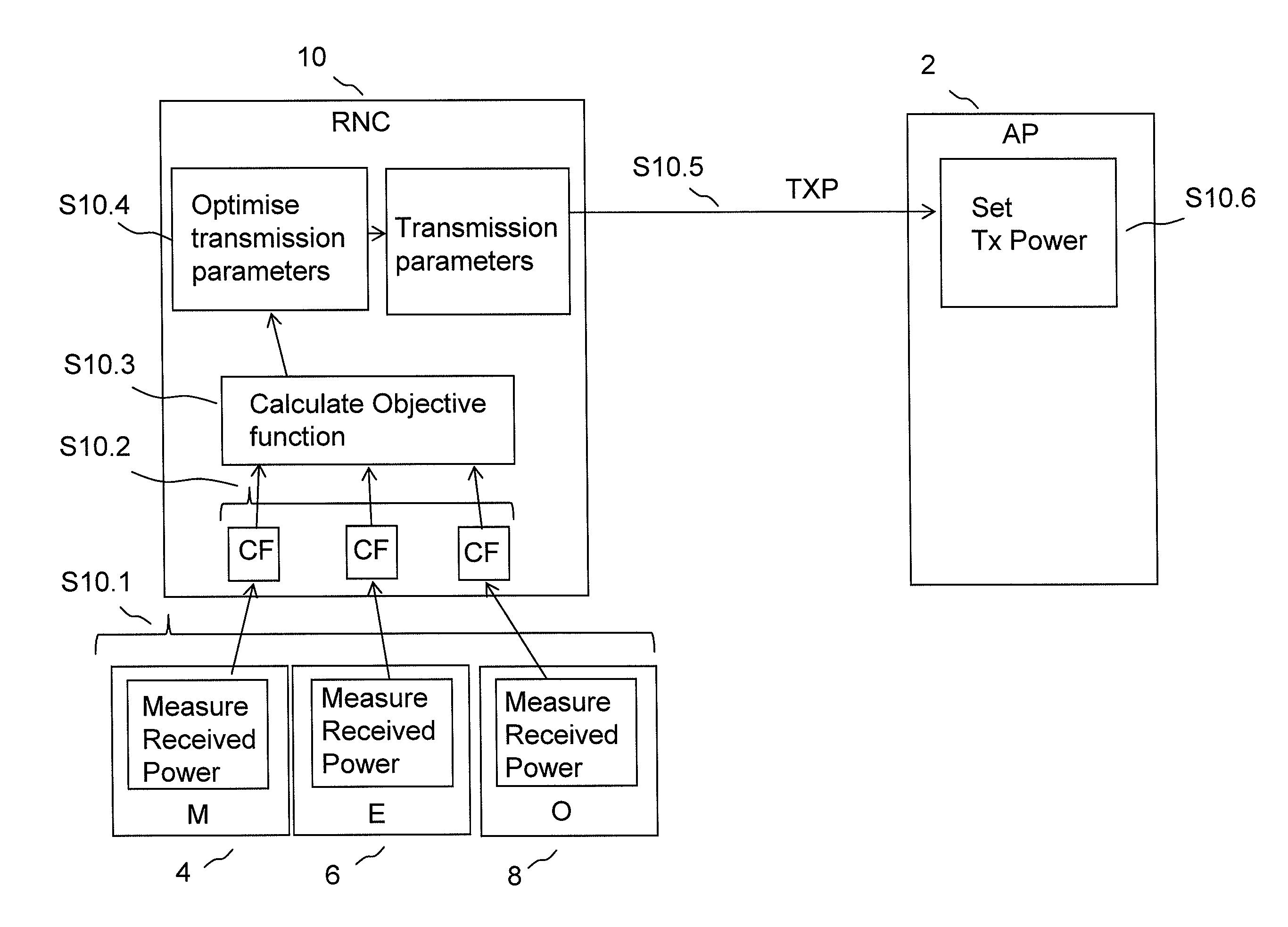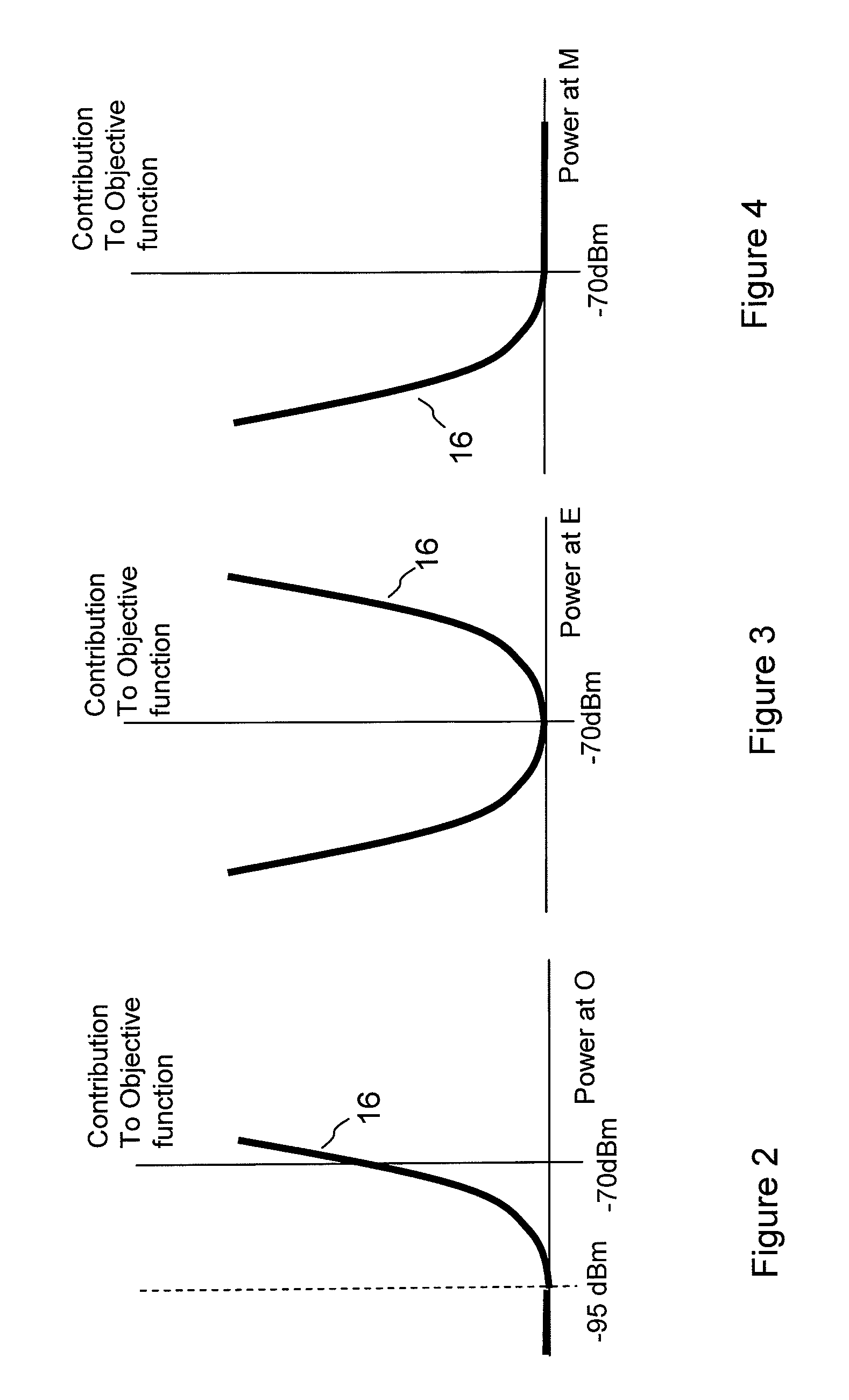Optimisation of transmission parameters of access points in wireless networks
a wireless network and transmission parameter technology, applied in the field of data communication networks, can solve the problems of affecting the coverage of wireless connections, affecting the service life of wireless connections, so as to facilitate the implementation of economical sensors, facilitate the balancing of load in the network, and ease the effect of network congestion
- Summary
- Abstract
- Description
- Claims
- Application Information
AI Technical Summary
Benefits of technology
Problems solved by technology
Method used
Image
Examples
Embodiment Construction
[0025]In general, the present invention is directed to methods and apparatus for for optimising the coverage of networks including wireless access points.
[0026]By way of example an embodiment of the invention will now be described in the context of a zone such as business premises, which is provided with a network of wireless access points, which may also be referred to as connection points or base stations, with which one or more user equipments can form wireless connections. The access points will typically include transceivers appropriate for a wireless connection and also a wired connection to a further portion of a data network, which may be a corporate network including a data centre in another location or it may include a connection to the internet. Various types of devices equipped with a wireless transceiver can be connected to the network via the connection points, such as personal computers (PCs) and mobile data units such as PDAs (personal digital assistant), which can b...
PUM
 Login to View More
Login to View More Abstract
Description
Claims
Application Information
 Login to View More
Login to View More - R&D
- Intellectual Property
- Life Sciences
- Materials
- Tech Scout
- Unparalleled Data Quality
- Higher Quality Content
- 60% Fewer Hallucinations
Browse by: Latest US Patents, China's latest patents, Technical Efficacy Thesaurus, Application Domain, Technology Topic, Popular Technical Reports.
© 2025 PatSnap. All rights reserved.Legal|Privacy policy|Modern Slavery Act Transparency Statement|Sitemap|About US| Contact US: help@patsnap.com



